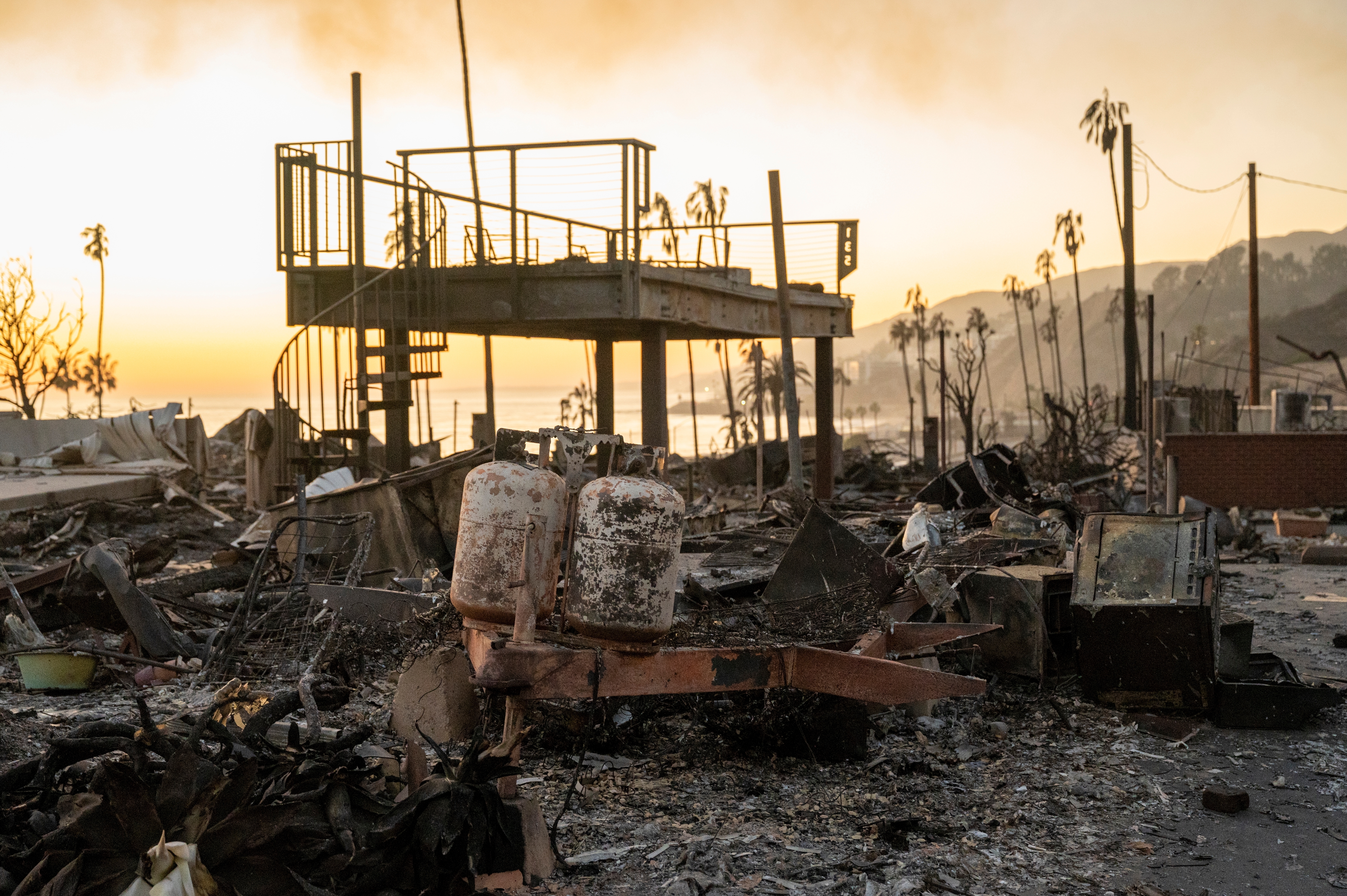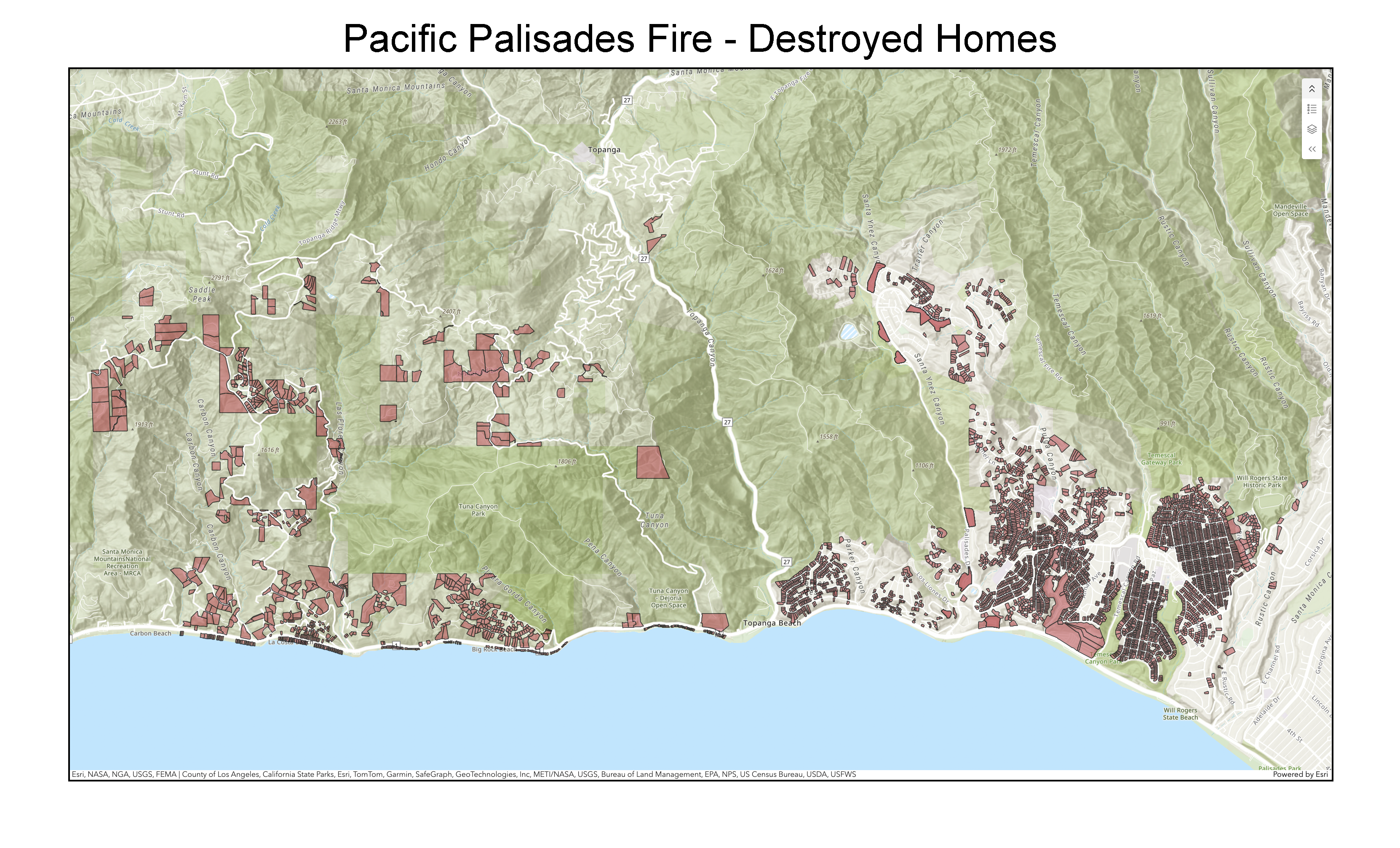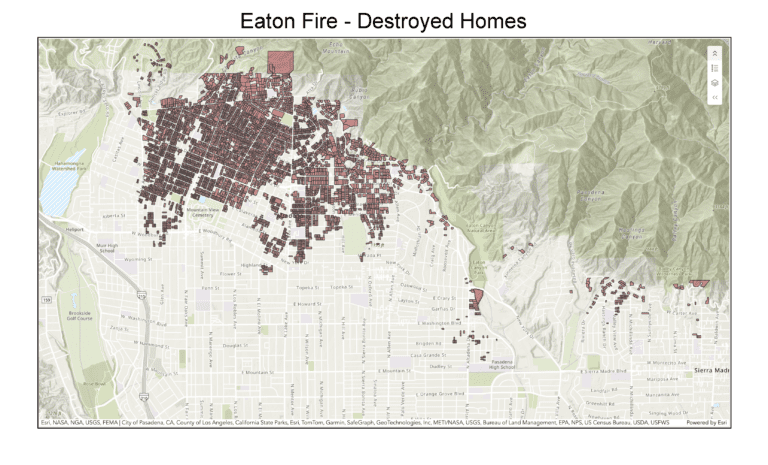The Vast Scope of Damage

BY KRISTOPHER ECLARINO, SENIOR TECHNICAL MANAGER
We know the story by heart – on January 7, fueled by powerful winds and dry conditions, the Eaton Fire consumed more than 14,000 acres and destroyed 7,000 homes and buildings in Altadena, Pasadena, and Sierra Madre.
At the same time, the Palisades Fire scorched over 23,000 acres and destroyed 10,000 houses and businesses across Pacific Palisades, Malibu, and unincorporated sections of the Santa Monica Mountains.
How does one grasp the vast scale of damage that took place – as well as understand the unprecedented effort it will take to recover and rebuild? The comparison that came to mind was that of the World Trade Center (WTC) towers, destroyed by a terrorist attack in September 2001. The damage, then, was 10 million square feet (ft²), 5 million ft² per tower.
First, let’s caveat the differences. 9/11 was an act of war. The wildfires were not. The winds also behaved differently. In Palisades, the winds (at least at first) blew massive clouds of ash out to sea. A couple days later the wind returned, bringing smoke back into the LA basin. Altadena’s ash blew south towards Long Beach. In New York, the winds blew towards Brooklyn. Another distinction, the materials from the WTC towers were largely concrete dust, substantively different from the plastics and wood that comprise LA-area homes. Moreover, the WTC towers were local to the Financial District, while the recent wildfires spread over 60 square miles.
Using the most recent CAL FIRE Damage Inspection Data for both Palisades and Eaton fires and overlapping with data from LA Assessor parcel data, we have found that 85% of homes burnt were built before 1980 (5,645 homes destroyed by the Eaton Fire and 4,265 homes destroyed by the Pacific Palisades Fire). We cite pre-1980 data because lead-based paints, asbestos-containing insulation, and other hazardous materials were then commonly used in homes.


When structures containing asbestos or lead-based materials burn, there is the potential for hazardous debris to become airborne and spread across large distances. A 2024 study examining the long-term impacts of wildfire smoke exposure in California estimated that particulate matter from fires between 2008 and 2018 contributed to 52,000 to 56,000 premature deaths.
Beyond the physical health impacts, these catastrophic fires have introduced many Angelenos to a phenomenon called “solastalgia”—a form of emotional or existential distress caused by environmental change. Unlike nostalgia, which involves longing for a place you’ve left, solastalgia refers to the grief and anxiety felt when the place you live in changes dramatically around you. Residents of Altadena, Pacific Palisades, and many Angelenos are experiencing this distress as they return to neighborhoods rendered unrecognizable, with familiar landmarks, cherished trees, and community spaces reduced to ash.
While scientists from UCLA, Harvard, and the University of Texas are currently monitoring airborne and soil contaminants, we are concerned that there is no coordinated, systematic approach to air, soil, and water sampling.
A silver lining – Dr. David Eisenman, a Climate Resolve advisory board member, was recently named Chair of the UCLA Health Wildfire Steering Committee. With his leadership, he may help persuade LA County to adopt a more analytical approach. Akin to the WTC tragedy, Dr. Eisenman is launching a Wildfire Registry to enable researchers to investigate the long-term health impacts of wildfire exposure, including respiratory, cardiovascular, and mental health effects.
The bottom line – the total burnt aerosol material (pre-1980) for both fires is approximately 19,226,000 ft², approximately double the amount of toxic materials released by the collapse and burning of WTC towers. When adding post-1980 homes, the total square feet aerosolized is 24,899,575 ft².
That’s approximately 2.5 times the square feet destroyed in the WTC tragedy.
We’ve got our work cut out for us.
